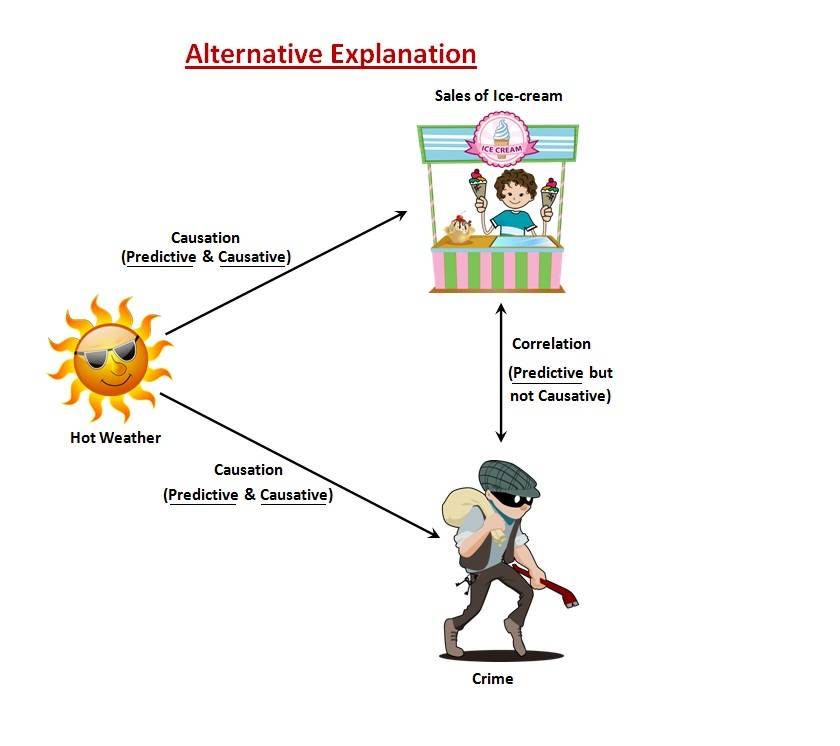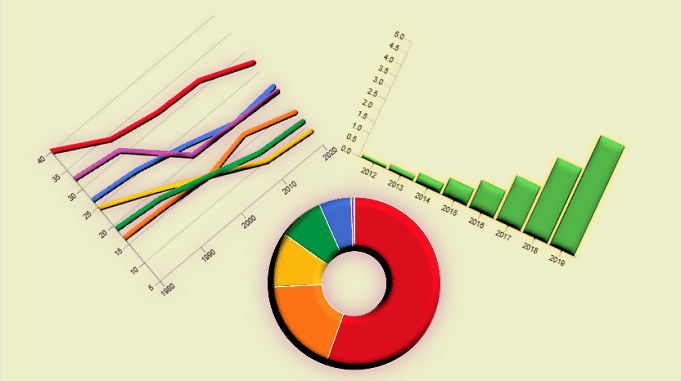
Sources and Methods of Primary, Secondary & Internal Data Collection in Hindi are as follows –
प्राथमिक डेटा (Primary Data) के संग्रह के तरीके और स्रोत:
प्राथमिक डेटा एक प्रकार का डेटा है जिसे शोधकर्ता मूल स्रोतों से सीधे साक्षात्कार, सर्वेक्षण, प्रयोग आदि के माध्यम से एकत्र करते हैं। प्राथमिक डेटा एकत्र करने के तरीके और स्रोत इस प्रकार हैं:
- Direct Personal Interview (प्रत्यक्ष व्यक्तिगत साक्षात्कार):
साक्षात्कारकर्ता सीधे व्यक्ति से डेटा एकत्र करता है।
- Telephonic interviews (टेलीफोनिक साक्षात्कार):
साक्षात्कारकर्ता टेलीफोन साक्षात्कार के माध्यम से डेटा प्राप्त करता है।
- Indirect Oral Investigation (अप्रत्यक्ष मौखिक जांच):
डेटा तीसरे व्यक्तियों से एकत्र किया जाता है जिनके पास जांच के विषय का ज्ञान (सूचना) होता है।
- Information from correspondents (संवाददाताओं से जानकारी):
जांच के क्षेत्र में कार्यरत एजेंटों से डेटा एकत्र किया जाता है।
- Questionnaires filled out by enumerators (प्रगणकों द्वारा भरे गए प्रश्नावली):
प्रशिक्षित प्रगणक डेटा एकत्र करने के लिए प्रश्नावली भरते हैं।
- Mailed questionnaire (Mail की गई प्रश्नावली):
प्रश्नावली (प्रश्नों की सूची) के माध्यम से सूचनाकर्ता से Mail द्वारा डेटा एकत्र किया जाता है.
द्वितीयक डेटा (Secondary Data) के संग्रह के तरीके और स्रोत:
द्वितीयक डेटा अनुसंधान डेटा है जो पहले ही प्राप्त किया जा चुका है और शोधकर्ताओं के लिए उपलब्ध है। यह शब्द प्राथमिक डेटा के विपरीत है, जो सीधे अपने स्रोत से प्राप्त डेटा है। द्वितीयक डेटा एकत्र करने की विधियाँ और स्रोत इस प्रकार हैं:
- Newspapers (समाचार पत्र):
क्योंकि समाचार पत्र के माध्यम से प्रदान की जाने वाली जानकारी आमतौर पर काफी विश्वसनीय होती है, समाचार पत्र द्वितीयक डेटा के सबसे विश्वसनीय स्रोतों में से एक हैं। यह राजनीतिक, आर्थिक और शैक्षिक डेटा के लिए सबसे अच्छा स्रोत है, लेकिन वैज्ञानिक डेटा के लिए नहीं।
- Books (पुस्तकें):
ध्यान से चुने जाने पर पुस्तकें प्रामाणिक डेटा का एक विश्वसनीय स्रोत हैं, और साहित्य समीक्षा तैयार करने में सहायता कर सकती हैं।
- Websites (वेबसाइट):
कई नियमित वेबसाइटें हैं जो विशेष रूप से प्रामाणिक डेटा देती हैं जिन पर शोधकर्ता भरोसा कर सकते हैं।
- Blogs (ब्लॉग):
ब्लॉग सबसे लोकप्रिय ऑनलाइन डेटा स्रोतों में से एक हैं, लेकिन वे वेबसाइटों की तुलना में कम विश्वसनीय हो सकते हैं। नतीजतन, उन पर हमेशा भरोसा नहीं किया जा सकता है।
- Published Sources (प्रकाशित स्रोत):
विभिन्न शोध विषयों और अध्ययनों के लिए, कई प्रकाशित स्रोत उपलब्ध हैं। परिस्थिति के आधार पर, प्रकाशित स्रोत मुद्रित या इलेक्ट्रॉनिक हो सकते हैं। उदाहरण के लिए, सरकारी और अर्ध-सरकारी प्रकाशन आदि।
- Unpublished Personal Sources (अप्रकाशित व्यक्तिगत स्रोत):
सार्वजनिक स्रोतों की तुलना में, ये उतने आसानी से उपलब्ध या सुलभ नहीं हो सकते हैं। उदाहरण के लिए, भारतीय जनगणना (वे अपने स्वयं के रिकॉर्ड के लिए संगठनों द्वारा एकत्र की जाती हैं)।
- Journal (जर्नल):
जब शोध की बात आती है, तो जर्नल आमतौर पर अधिक प्रामाणिक और सटीक होते हैं।
- Government & Semi-government Records (सरकारी और अर्ध-सरकारी रिकॉर्ड):
सरकारी रिकॉर्ड एक महत्वपूर्ण और प्रामाणिक द्वितीयक डेटा स्रोत हैं। इनमें वे डेटा शामिल हैं जिनका उपयोग विपणन (marketing), प्रबंधन, मानविकी, सामाजिक विज्ञान अध्ययन आदि में किया जा सकता है। उदाहरण के लिए, जनगणना के आंकड़े, स्वास्थ्य रिकॉर्ड आदि सरकारी रिकॉर्ड हैं।
- Podcasts (पॉडकास्ट):
पॉडकास्ट भी इन दिनों तेजी से लोकप्रिय हो रहे हैं। पॉडकास्ट के दौरान, आमतौर पर जानकारी साझा की जाती है, और श्रोता इसका उपयोग डेटा एकत्र करने के लिए कर सकते हैं।
- Diaries (डायरी):
आम तौर पर, डायरी निजी होती है, लेकिन इन दिनों, लोग अपने जीवन की विशिष्ट घटनाओं को कवर करते हुए सार्वजनिक डायरी पोस्ट करते हैं। उदाहरण के लिए, ऐनी फ्रैंक की डायरी, जिसमें नाजी युद्धों का सटीक रिकॉर्ड था।
- पत्र, रेडियो स्टेशन, सार्वजनिक क्षेत्र के रिकॉर्ड आदि भी द्वितीयक डेटा संग्रह के स्रोत हैं।
आंतरिक डेटा (Internal Data) के संग्रह के तरीके और स्रोत:
आंतरिक डेटा सूचना, सांख्यिकी और रुझान हैं, जो कंपनियों द्वारा उनके संचालन के माध्यम से खोजे जाते हैं। आंतरिक डेटा कंपनी के अंदर प्राथमिक स्रोतों से प्राप्त कंपनी के बारे में जानकारी है। लेखांकन रिकॉर्ड, जैसे पेरोल से कर्मचारी की कमाई, बिक्री पत्रिका से बिक्री संख्या, और कच्चे माल की मात्रा आदि, डेटा संग्रह के लिए आंतरिक रिकॉर्ड हैं। आंतरिक डेटा एकत्र करने के तरीके और स्रोत इस प्रकार हैं:
- Internal research (आंतरिक अनुसंधान),
- Financial paperwork (वित्तीय कागजी कार्रवाई),
- Sales trends and records (बिक्री के रुझान और रिकॉर्ड),
- Human resources data (मानव संसाधन डेटा),
- Customer habits (ग्राहकों की आदतें),
- Software user trends (सॉफ्टवेयर उपयोगकर्ता रुझान),
- Operational trends (परिचालन रुझान),
- Leadership decision-making (नेतृत्व निर्णय लेना),
- Cash flow reports (नकदी प्रवाह रिपोर्ट),
- Marketing data (मार्केटिंग डेटा),
- Survey results and more (सर्वेक्षण के परिणाम और बहुत कुछ).
Read Also: Types, Sources & Methods of Data Collection: Primary Data, Secondary Data, Internal Data
(Source – Various books from the college library)
Tags: primary and secondary data sources, primary and secondary sources of data, primary and secondary sources of data collection, methods of data collection primary and secondary sources, primary sources of data and secondary sources of data, primary and secondary sources of data in statistics
Copyrighted Material © 2019 - 2024 Prinsli.com - All rights reserved
All content on this website is copyrighted. It is prohibited to copy, publish or distribute the content and images of this website through any website, book, newspaper, software, videos, YouTube Channel or any other medium without written permission. You are not authorized to alter, obscure or remove any proprietary information, copyright or logo from this Website in any way. If any of these rules are violated, it will be strongly protested and legal action will be taken.





Be the first to comment